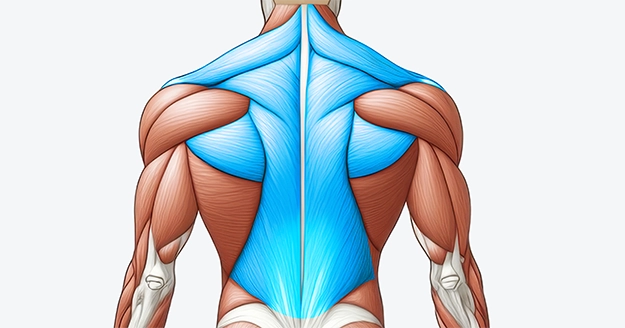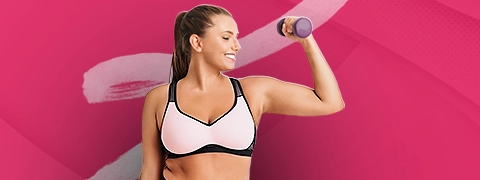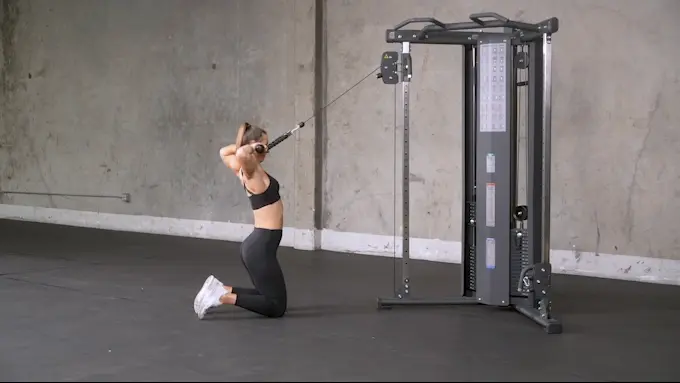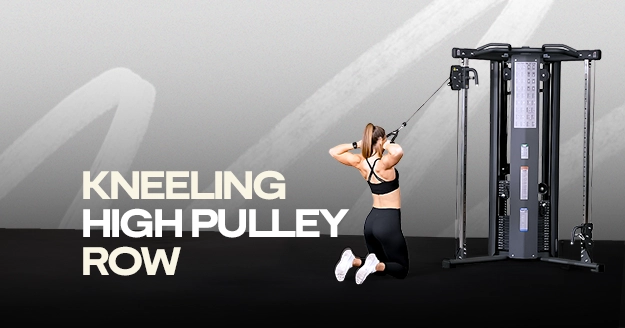Exercise Profile
Kneeling High Pulley Row Overview
The Kneeling High Pulley Row is a highly effective exercise primarily targeting upper back muscles. By strengthening the muscles between and around the shoulder blades, the Kneeling High Pulley Row aids in reversing the effects of extended sitting or bad posture.
A key advantage of the Kneeling High Pulley Row is its ability to maintain consistent muscle engagement through a controlled, full range of motion. The kneeling position minimizes lower-body involvement, helping you focus on your back and arms while building strength and endurance. Its adaptability makes it suitable for all fitness levels, with simple weight adjustments to match your progress.
Incorporating this exercise into your routine can improve upper body strength, posture, and greater functional fitness.

Kneeling High Pulley Row Instructions
Step 1: Attach a rope to the cable around chest height and select the resistance. With both hands outstretched and palms facing one another, grasp the rope’s ends. Then, take a step backward and kneel.
Step 2: Keep your chest out and gently press your hips back. Engage your core and back.
Step 3: Pull your elbows down and out, bringing the rope below your chin. Squeeze your shoulder blades at the end.
Step 4: Return to the starting position by slowly reversing your motion.

Common Kneeling High Pulley Row Variations
Here are some common variations of the Kneeling High Pulley Row:
Kneeling High Pulley Row Tips
- Keep your core engaged throughout \to support your lower back and maintain proper posture.
- Avoid rounding your back by lifting your chest and shoulders back during the row to promote proper scapular movement and, thus, muscle engagement.
- Focus on smooth, controlled pulls rather than jerking the weight. This guarantees that the work is being done by your muscles rather than using momentum.
Kneeling High Pulley Row Common Mistakes
- Not Fully Retracting the Scapula: Failing to squeeze your shoulder blades together at the peak of the movement means you’re not fully engaging your back muscles.
- Improper Arm Path: Pulling the cable too low or too narrow can diminish upper back activation. Aim to keep your arms moving in a straight line, with elbows above shoulder height, to maximize the exercise’s effectiveness.
Frequently Asked Questions
What’s the difference between a Kneeling High Pulley Row and a regular seated cable row?
The main difference is the positioning. In the Kneeling High Pulley Row, you are kneeling on the floor, which engages your core and stabilizer muscles more, while the seated row typically targets the same muscles but with your body supported on a bench or seat.
What’s the best grip for this exercise?
A neutral or overhand grip is most common, but you can experiment with a reverse (underhand) grip or use a rope attachment to vary the exercise and target different parts of your back and arms.
How do I know if I’m using the correct weight for this exercise?
Initially, use a moderate weight to ensure proper form. The movement should feel challenging by the last few reps but not so difficult that you lose control or sacrifice form.
Post your post-workout selfies in IG and tag @trainestapp, #trainest, or DM them to us to get a shoutout on Trainest Stories!


